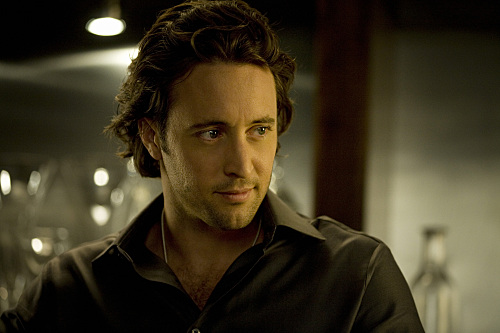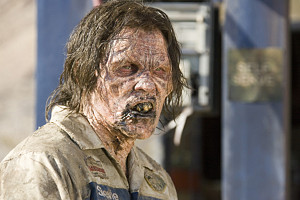My fantastically fascinating essay about zombies in modern pop culture continues, trying to find out why we think zombies are so rockin’ awesome. Parts I and II looked at political parallels between us and zombies, while part III looked at the links between the administrative industry and zombiehood. None of these aforementioned theories about the prevalence of zombies are my original ideas, but I do have some speculation of my own about the origins of our collective zombiephilia.
This is my interpretation: Part of the reason we like zombies so much is that, as portrayed in modern pop media, they are extreme vampires. They are perfectly modern monsters in that they threaten humans at the essential seat of their humanity — the brain — thus updating the cannibalistic implications of the vampire for our current scientific state of knowledge.
To begin with, let’s establish the common modern portrayal of zombies. Almost all of the media examples enumerated in part I depict zombies with 3 key traits:
1. They are physically dead, but still animated. They are undead.
2. They feed on humans, most notably on braaaaaaaaainnnnns.
3. They are contagious. People turn into zombies either by catching a virus that the zombies carry or through zombie bites.

Mick St. John, modern pop vampire from TV show Moonlight [2007], looks pretty alive for a dead guy. How does he resemble a zombie?
The essential traits of modern zombies overlap almost completely with the essential traits of classical [and modern] vampires:
1. Vampires are animated corpses, thus, undead.
2. Vampires feed on humans by drinking their blood, not brains.
3. Vampires transmit vampirism through bites.

The modern pop zombies from Resident Evil: Extinction movie [2007] look more obviously dead than modern pop vampires, but they are, at base, the same kind of creature.
There are some important differences between modern pop zombies and modern pop vampires. Modern pop zombies are usually characterized as low in intelligence, while modern pop vampires are seen as human or superhuman in their level of intellect. Also, modern pop zombies show skinless skulls, missing eyes, severed limbs and other blatant signs of decay, while modern pop vampires, as well-preserved corpses, are distinguished from people by more subtle signs, such as their pointy teeth, cold skin and lack of respiration. That being said, both zombies and vampires are supernatural, cannibalistic threats, two forms of the same basic entity. [See my discussion about smart vs. dumb vampires for additional commentary.]
More later…